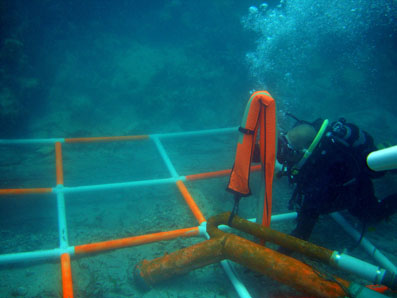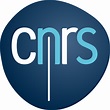Le Casimir Wreck Underwater Photographs for June/July 2014 Project.
Page 3
Once the first row of survey squares was finished the timbers were measured, drawn and photographed. We did not find many artefacts, in fact the squares that we did uncover had almost no artefacts remaining. This area clearly in the past had been looted. However the hull planking was intact for most of the section. There were a number of timbers, floors and futtocks which were missing and some which were in-situ were badly eaten by worms. We were only able to uncover survey squares B0,C0,D0,C1, D1, D2 & D3.
Like the previous surveys the remaining timbers are “as if someone has cut the wreck longitudinally down the middle of the wreck” with the port side remaining but everything from the keel to starboard (the side away from the reef) is missing. The keel should have been found along row B. As this is the deepest part of the ship from a construction view point, it was expected that there would be greater overburden of sand and rubble on it.
A domino was found in survey square A0 and was about 1.21 m deep below the hull planking. The domino was made of iron wood or mahogany with an ivory top and a copper alloy spinner, and was given the artefact number: PBW/2014/PB/I/11825. The wooden base which was split longitudinally and therefore not complete was given artefact No: PBW/2014/PB/W/11822 . This had separated from the ivory top and was found in the same survey square. The ivory domino top had six on one side and a blank on the other. The domino was 42 mm long, 21 mm wide and 4 mm thick. The diameter of the dimples was 5mm.
Wesleysurveying and documenting survey square C0 on the wreck site's port amidships.
Please go to page 4 to continue.
ADMAT's maritime archaeological work on this wreck site was assisted by ADMAT-FRANCE a non profit organisation based in the Institut de Paléontologie Humaine, Muséum National d’Histoire Naturelle, Paris.
ADMAT-FRANCE is a sub division of the Anglo ~ Danish Maritime Archaeological Team
ADMAT is delighted to have an association with Muséum Nationald’Histoire Naturelle at Paris, départememt Préhistoire, UMR-CNRS 7194.























